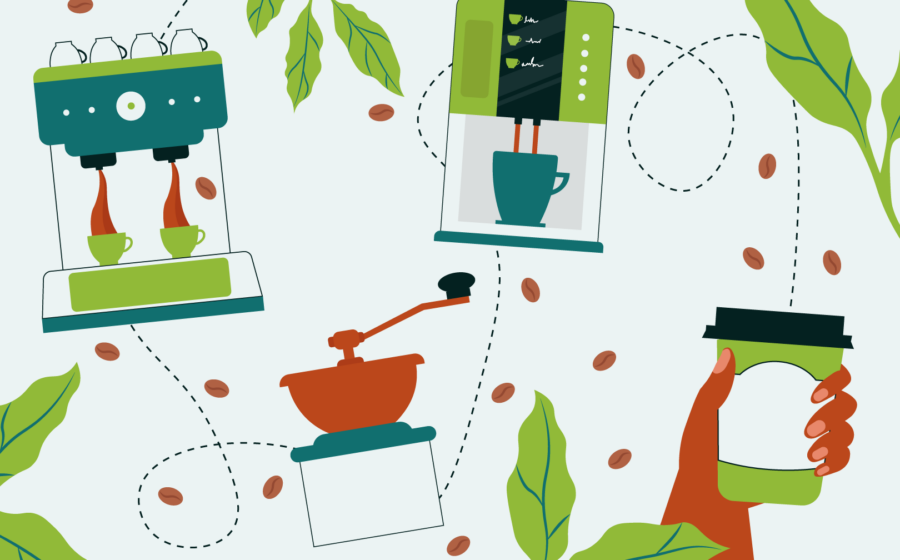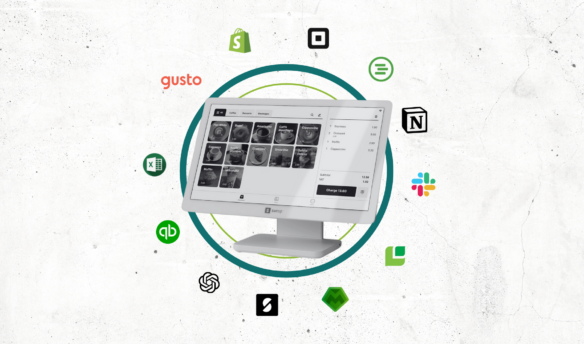This post is sponsored by our partners, SEB Professional.
Automation and artificial intelligence are popular buzzwords swirling around all industries, including the food and beverage space. Over the last few years, we’ve seen varying levels of automation in the café space, from robot baristas who can pull shots, steam milk, and pour latte art to volumetric espresso machines and automated inventory ordering systems.
But long before automation became a new buzzword in specialty coffee, many cafes relied heavily on a barista’s craft and artistry to curate the coffee experiences we’ve come to love. Many believe that automation threatens the craft and jobs of coffee professionals. Albeit a very reasonable worry, there is a way for automation and baristas to work in tandem to benefit cafes and create a far better customer experience.
Achieving the optimal balance of using automated technology and maintaining the human craft aspect of a coffee shop can be tricky but not impossible. Many coffee shops already use automation in various aspects of their workflow, showing that automated technology can help improve café operations and efficiency and give baristas time to put customers first.
The Efficiency Era for Coffee Demands Innovation
Quality, consistency, and speed of service are key reasons why many people choose to frequent their local café, says Chad Bowman, vice president of commercial foodservice sales at SEB Professional—which includes brands WMF, Schaerer, and Curtis, a global manufacturer of automated coffee and espresso machines. “Everybody’s so busy, especially in the morning, everybody’s so trained [to think] that I have X amount of minutes to get in and get my coffee,” he says. If cafes can’t get customers in and out quickly, Bowman says, they’ll simply take their business elsewhere next time.
Imagine having three team members doing hand pour overs for five minutes. That’s 15 minutes lost.
Cameron Philgreen, For Keeps Coffee
Bowman encourages cafes to look to automation to help baristas spend their time more efficiently and deliver high-quality, consistent products in less time. “Increases in barista productivity frees baristas to focus on duties automation can’t help with, such as customer service,” says Nick Bentley, the sales lead and co-founder at Vera Coffee Solutions, a Connecticut-based coffee machine and service supplier specializing in data-driven coffee solutions for hospitality businesses.
Bentley highlights how automated equipment can enhance operational efficiency, reduce ticket times, improve staff productivity, and minimize errors. The faster the turnaround time, the more customers you can serve and interact with meaningfully.
But there are some processes, like brewing pour overs, that can’t be rushed. Cameron Philgreen is the co-owner of For Keeps Coffee with his wife Danielle in Waco, Texas, and he wanted to find a way to serve pour overs without slowing down his team. He recognized that around 5-10% of their customers were looking for something other than drip coffee that was consistently delicious.
For Keeps’ solution? The Poursteady, an automatic pour-over coffee maker. For Keeps Coffee has the second-ever Poursteady in Texas (the PS3 model), which can make three pour overs simultaneously. A barista sets up a filter with ground coffee, and with one push of a button, the Poursteady begins to shower water over the brew bed, allowing the barista to walk away from the pour over.
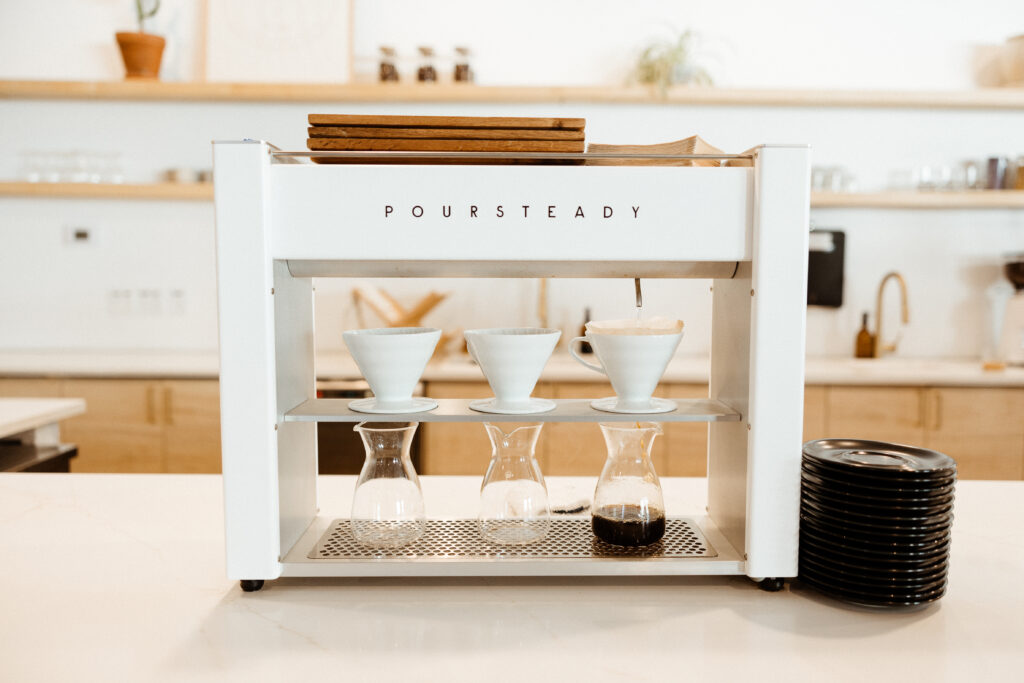
Traditional batch brewing can also slow down bar flow, requiring staff to brew large pots of coffee throughout the day. During busy rushes, the process of dosing, grinding, and waiting minutes for a pot to brew can completely halt service; during slow times, ensuring batch brew stays fresh can mean rotating in new pots even when the last one still has coffee.
Bowman says their newly launched Curtis Genesis Skyline commercial coffee brewer addresses these problems. “You’re seeing automation all around, and the Genesis Skyline completely automates an entire coffee program because it does bean-to-cup and bean-to-urn.”
The Genesis Skyline automatically doses and grinds coffee (a hopper holds beans on top of the brewer), allowing staff to schedule brewing based on demand throughout the day via calendar programming. It brews larger batches into an urn during peak hours and switches to on-demand bean-to-cup mode during slower parts of the day.
Taking Better Care of Your Staff and Customers
In the hustle and bustle of a cafe, staff often find themselves juggling multiple tasks throughout their shift. While this multitasking is impressive, specific tasks can become bottlenecks, slowing everything else down. For Philgreen—and for many cafes—preparing a pour over coffee can sideline a barista for roughly five minutes and disrupt workflow. “Imagine having three team members doing hand pour overs for five minutes,” says Philgreen. “That’s 15 minutes lost.”
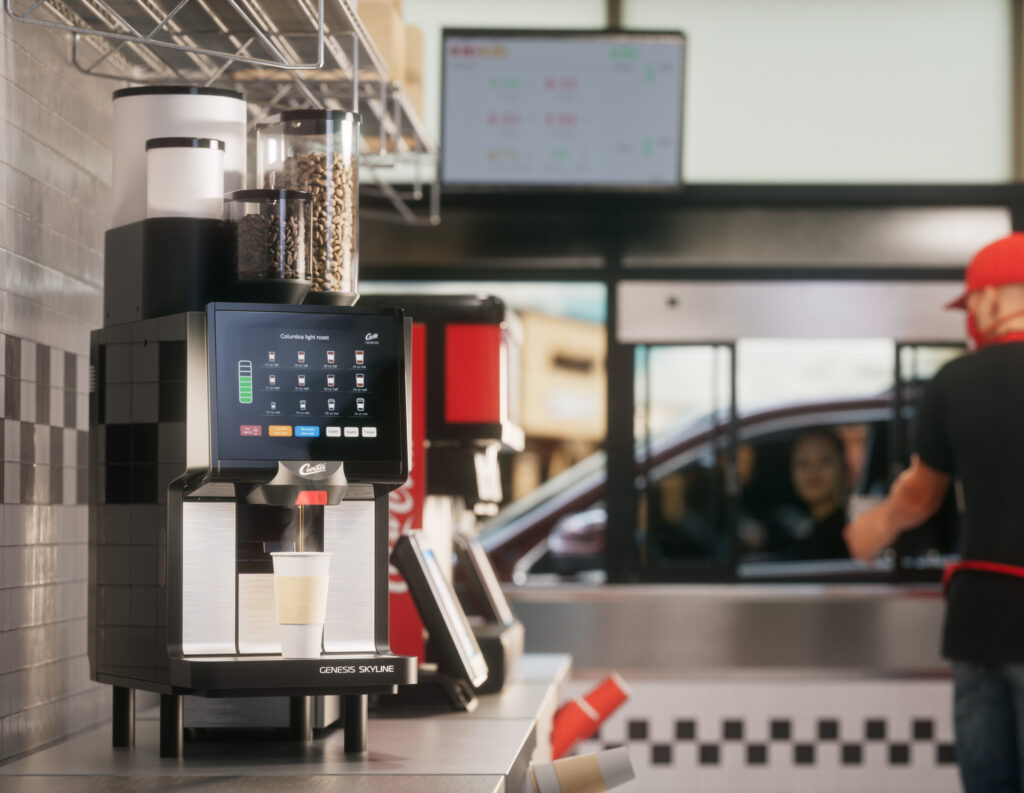
Konstantin Suvorov, the tech lead and co-founder at Vera Coffee Solutions, advises café owners to find tasks causing bottlenecks and explore potential automated solutions that can achieve similar results. “If an automated solution can maintain the same level of quality while freeing up baristas to enhance the customer experience, we believe it’s worthwhile to implement that particular solution,” he says.
Jillian Willis, the Director of Operations at BrewHaha! Coffee, a coffee company with nine locations around Wilmington, Delaware, agrees with the benefits automation provides both staff and customers. “If this technology allows our baristas to get through their shift without being overwhelmed and we can continue to share great coffee with our community, it’s a win for everybody.”
Automation might save hours at a time, but when you start stacking up these small time-savers, it really adds up. Automating parts of your workflow allows staff to focus on specialized tasks and make more meaningful connections with customers without compromising drink quality or service speed.
If this technology allows our baristas to get through their shift without being overwhelmed and we can continue to share great coffee with our community, it’s a win for everybody. Jillian Willis, Brewhaha! Coffee
Stephen Welch is the Coffee Development Manager at Pret A Manger. In a panel conversation at Coffee Fest New York, Welch emphasized the connection between barista education, well-being, and customer interactions. “It comes down to having the right tool for the right job…one of the biggest dangers in any sort of work, whether automated or not, is alienation from your final product, where you just feel like ‘my work doesn’t matter.’ And so much of that has to come down to engaging with people, listening to them, and finding solutions to make them feel reinvigorated and reinvested in the process.”
Improved Drink Consistency and Quality
While speed of service is important, what arguably matters more is that the customer’s order is correct and tastes just as good as it did the last time they visited. “We want [customers] to have the same experience and get the same level of care and excellence in their drink,” says Philgreen. “And so it’s important to have consistency, especially between team members, and automation helps with that.”
Baristas’ skill levels vary, but even the most highly trained baristas can’t always produce perfection. Survorov says automation can help ensure drinks come out consistently while still maintaining a high level of quality for every drink made: “Tasks that are repetitive and controlled, like weighing, tamping, pouring, and grinding, can be executed with much greater consistency by machines.”
Baristas can combine their technical skills with automated equipment to maximize precision, enhance consistency, and make every drink as tasty as possible. Philgreen says he automates tasks prone to inconsistencies between staff members to reduce fluctuations in these variables.
I think that’s key with automated equipment: anybody can use it and still provide a good quality product every time. Chad Bowman, SEB Professional
Bentley stresses that consistency boosts customer satisfaction, loyalty, operational efficiency, and, ideally, profitability. “It also simplifies training and quality control, allowing shop owners to create exceptional coffee experiences for their guests,” he says. “I think that’s key with automated equipment: anybody can use it and still provide a good quality product every time,” says Bowman.
SEB Professional works with baristas and coffee shops worldwide, and they’ve noticed more cafés using two-step espresso machines, such as the Schaerer Coffee Art Plus or WMF espresso. A two-step machine automates the entire espresso-making process with the push of a brew setting button, with a separate step for steaming milk using a steam wand. “Folks are seeing now that two-step espresso machines can provide a high-quality cup, with consistency.”
Consistency isn’t just important to customers—it also impacts your bottom line. If your staff is constantly grinding too much coffee or pulling poorly-extracted shots, that’s a lot of coffee (and time) wasted. “Brewing coffee requires precise inputs and measurements to achieve exceptional flavors,” says Suvorov. “Even small variations from a recipe can greatly affect the quality of a brew. While human judgment and taste are essential for building great recipes and [quality controlling] the recipes, machines excel at following precise parameters and hitting specific targets.”
Getting Started with Automation: Tips and Tricks from the Experts
While there are concerns that shop owners will try to use automation to replace baristas, Bentley says technology can only complement their abilities. “There is no perfect solution without human guidance,” he says. “You need someone with authority who has knowledge and skills to dial in the recipes, walk you through the sensory experience, and create a cohesive hospitality experience with storytelling and personality.”
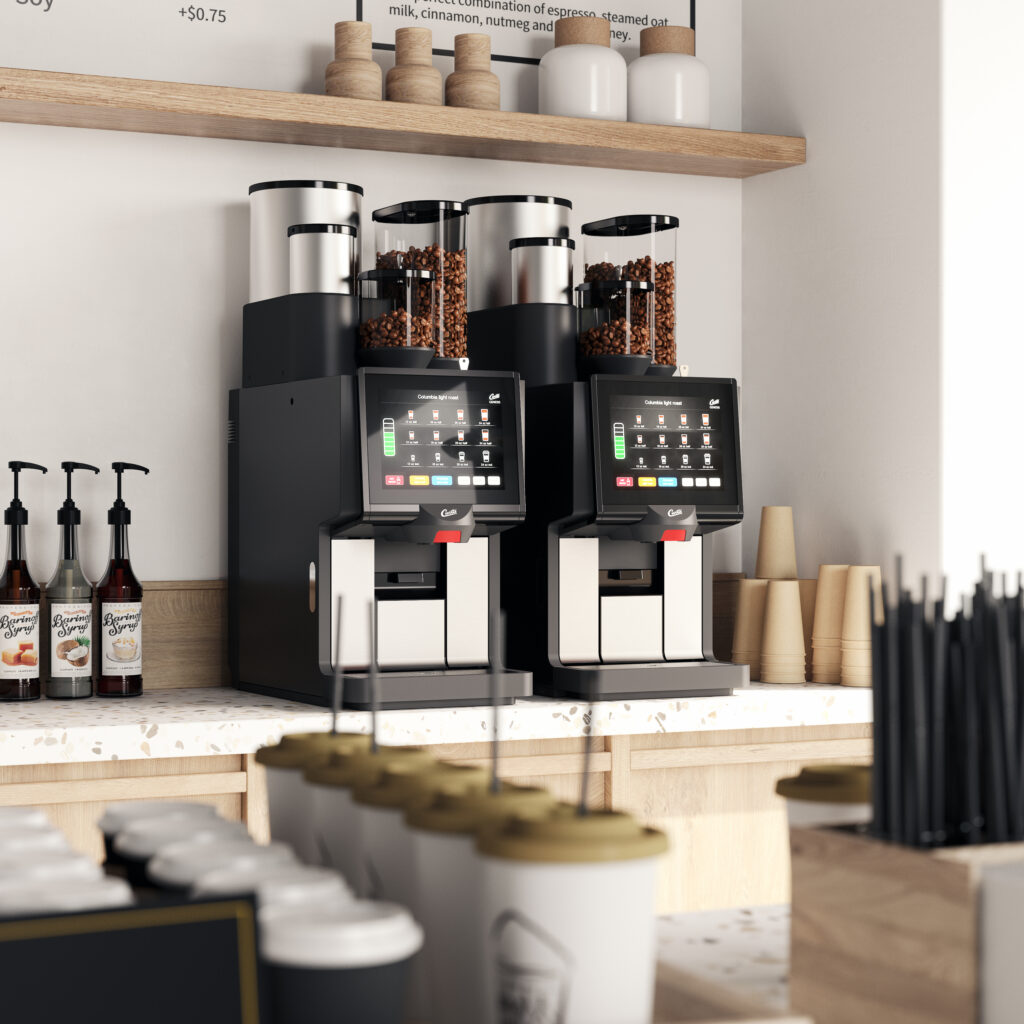
So, where should you start? Bentley recommends investing in equipment designed to boost staff efficiency and productivity that can actually solve a specific problem your business is facing. Bentley reminds café owners to periodically check that their automated equipment works for them, not against them. “On a regular basis, you should assess the performance of your automated systems and make adjustments to ensure they align with your business goals and customer expectations.”
He says the next step is to “look for reputable brands in your area that offer good after-sales support and explore the machine models they offer that align with your needs.” Lastly, once you’ve picked your equipment, trained and familiarized your staff, and adjusted your workflows accordingly, “encourage feedback from both your staff and customers regarding the automated processes,” adds Bentley. “Use their insights to fine-tune your approach and address any issues.”
The ideal outcome is for automation to complement—not replace—your team’s skills and elevate their efficiency while helping them produce consistently top-tier drinks and provide stellar customer service. When cafes strike the right balance between automation and human craft, they can offer a truly unparalleled coffee experience. This synergy ensures that baristas’ creativity and dedication remain invaluable in the specialty coffee space.
“As the industry continues to evolve, the need for innovation and automation will continue to be a focus moving forward,” says Bowman. “The challenges for labor, quality, consistency, and speed of service certainly make the need for automation an integral part of operations moving forward.”

Sponsored by SEB Professional
SEB Professional, part of Groupe SEB, specializes in automated coffee and espresso machines through brands like WMF, Schaerer, and Curtis, focusing on enhancing café efficiency, drink consistency, and customer experience.



